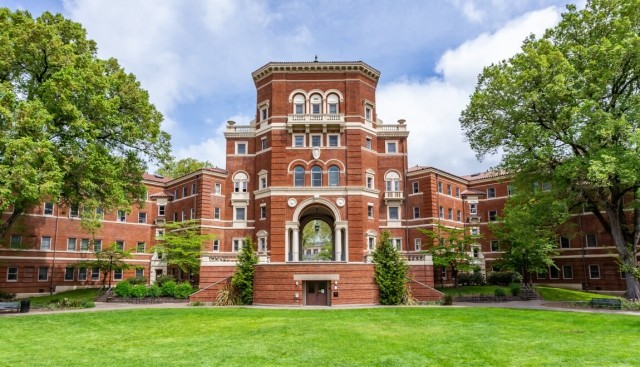Making a budget is an excellent way to track your finances and grow a healthy nest egg. You’re probably reading this article right now because you’re in the process of finding a new apartment. Budgeting now can help you build up cash for a variety of apartment-related expenses, including money for rent, hiring movers, and saving for a security deposit.
In the midst of all the craziness that comes with moving, I get that you have a lot on your plate. To help finance the next chapter of your life, I encourage you to read on about how to budget and save for the apartment of your dreams.
How to Make a Budget for Your Apartment
- Know your income
- Determine your monthly expenses
- Set an achievable goal
- Adjust your spending habits
- Record and monitor spending
What is budgeting anyway?
Budgeting is the action you take to create a budget (a spending plan) that allows you to evaluate your financial standing, and determine if you have enough money saved to purchase something you need or want. When you’re saving for a goal of some kind – and in this case, for an apartment-related purchase - sticking to a budget can help you achieve your goal faster.
So why do renters make a budget? Some may budget to save for early retirement, pay a security deposit in full at their new apartment community, and make sure they can live comfortably on their salary in their destination city. Regardless, you need to create a budget to know how much you can afford to spend on rent.
Although convenient and most widely used, you don’t have to budget for just large purchases; renters find it useful to budget and save for little things as well. Students might save for something small like a new desk chair for their college apartment. They also might save their wages and tips for the opportunity to finally move out of mom and dad’s house and live on their own in their very first place. Others might need to budget for a two-bedroom apartment to accommodate a growing family.
What’s great about budgeting your money is that it can help you save for short-term and long-term goals and investments. A renter might pursue a long-term savings goal for when they eventually want to buy a house. Short-term budgeting goals a renter may set for themselves might be saving up for the arrival of a new puppy or a much-needed family beach vacation.
Factors of a Budget
1. Your income
The first thing you do when making a budget is know your income. And if you don’t know already, reach out to your employer for a pay stub report (or check last year’s tax form if your employment has not changed). While work pay (salary, wages, tips, and bonuses/commission) is the most identifiable form of income, some additional earnings you can add into your calculation include:
- Interest
- Dividends
- Capital Gains from Stocks and Bonds
Reaching out to your financial and investment bureaus for these cash inflow reports will help you determine an accurate income amount. Cash gifts shouldn’t be considered as part of income because it doesn’t (typically) come from a steady source, but it can help you reach the end goal more quickly. Did grandma send you a nice $75 check in the mail for your birthday? Go ahead and deposit it into your savings account and watch it make interest. Cha-ching!
2. Your monthly expenses
Determining your monthly expenses can help predetermine how realistically you can accomplish your goals. You can gauge your spending by reviewing your past bank and credit card statements. For a more accurate amount, you’ll want to go back at least six months to a year. Be sure to add in your intermittent expenses, such as renter’s insurance, into your calculation.
To calculate your spend, simply add up all of your expenditures from your preset time frame and divide by the same number of months. This sum will give you a raw average of your expenses. You’ll also want to budget for those unexpected costs like medical bills, which means you should add an additional 10 percent on top of your raw average to give you your average monthly expense.
3. An achievable goal
Once you’ve got your average monthly spend, it’s time to set your goal. Think about what it is you’re trying to accomplish and how long you have to do it. You can set an achievable goal by figuring out your net income, which is gross (before tax) income minus average monthly expense.
“In the green” is a term used in the corporate business world that identifies a profitable company or business sector. A renter’s net income that’s in the green refers to someone that’s in good standing to start their savings plan. Being “in the red” means there is a shortfall, indicating there isn’t any money remaining to be put into savings right now. In this circumstance, spending and goals will need to be adjusted accordingly to get back to a good place. See below for exactly how to adjust spending habits.
4. Spending habits
Renters experiencing a financial shortfall will need to personally reflect on what they spend the most money on. There are tons of ways to decrease your overall spending and achieve your end goal. You can start by allocating a specific allowance for retail and entertainment. According to The Simple Dollar, the average U.S. resident spends $232 eating out at restaurants each month. Just by cutting this expense in half, you can put away $116 into savings to help pay for your apartment-related goal.
5. Spend recording
The most effective way to track your spending is to record it. Software tools like Excel are an easy way to monitor your personal expenses at home – or you can do it on your phone through user-friendly budgeting mobile apps. If you find yourself still in the red - even after making changes to your spending habits - you might benefit from reevaluating your goal and further cutting costs to meet the deadline.
How should I budget for an apartment?
You can budget for an apartment using the 50/30/20 Rule, a resourceful budgeting technique that distributes your income into three areas: needs, wants, and savings. According to the rule, you’re allowed to spend up to 50 percent of your income on life needs, such as rent and groceries. A need is something that’s absolutely essential to your quality of life and is not to be confused with a “want.” Thirty percent of your income is permissible for those want items like new clothes or concert tickets. The remaining 20 percent is what you should be putting away into savings, or paying off large debts like student loans.
How much should I spend on rent?
When it comes to how much you should spend on rent, think about how much you can realistically afford. Don’t spend more than 30 percent of your after-tax income on rent; it’s important to have a comfortable amount left over for general living expenses and savings. In addition to the general grocery and electric bills, you may need to save some of your salary for the use of amenities.
What do I mean by this? There are some apartment communities that use coin-activated washers and dryers, so you’ll need to save your change. Also, if you want a home with washer/dryer hookups, you’ll need to budget for the appliances as well as increased water usage. Making sure you budget for apartment fees, pet deposits, and pet rent can help determine how much you can spend.
What can I do to save money?
You can save money in a ton of different ways. Before you buy anything online, always check to see if the online item is on sale elsewhere or if a discount code can be applied to it. Grocery shopping is the perfect way to save on items you’ll use every day, and many retailers allow you to bring in clipped coupons or apply digital coupons to a loyalty card. These savings can then be put into a savings account at your bank.
Investing is a long-term approach that can yield a substantial amount of money with the right research and time. Make sure you speak to a financial advisor to see if this path is right for you.
Another savings method is to rent an apartment with a roommate. You’ll want to ask good interview questions when talking with candidates, and when you’ve found the right person, you should sit down and discuss the lease options before drafting a roommate agreement between the two (or three or four) of you.
Apartment Decorating Tips When You're on a Budget
First time renters are more likely in need to furnish their whole rental than the experienced apartment dweller. Decorating your home takes cash of course – and a lot of creativity! I would recommend starting out one room at a time; first the bedroom, followed by the kitchen, and bathroom. It’s also good to know which furniture items to splurge on and which to save.
Sometimes the home just needs a little pop of color or a new coffee table to make it look like new. Budgeting is very useful when decorating the apartment, and can help you pay off that gently used armoire or brand-new couch.
And When You Need a Bigger Apartment...
Is it feeling tight in your current place? Then you’ll probably be starting the budgeting process all over again to save up. Larger rentals have more expensive deposits and fees – it comes with the additional space. The higher utilities usage comes with a large home, so start budgeting for utilities now and be better prepared!
Now that you have all the tools and resources to budget and save for an apartment, it’s time to put them into action! No matter your end goal, every renter can benefit from budgeting and saving – you just have to be committed. Best of luck on your apartment endeavors!
Published January 28, 2019






